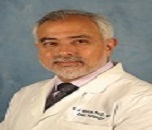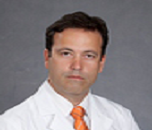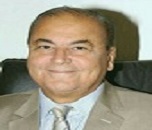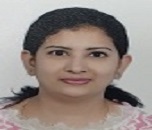Theme: Pediatrics - Struggle to Adapt And Survive COVID-19
Euro Pediatrics 2020
Pediatrics is a branch of medicine which deals with the health (physical, mental & social) and medical care, and services including prevention, diagnosis & treatment of acute & chronic diseases in infants, children & adolescents up to the age of 18. Pediatricians are the medical practitioner specializing in the child health and their diseases.
After a successful meet of Euro Pediatrics 2019 held during October 14-15, 2019 at Amsterdam, Netherlands we proudly announce “32nd European Pediatrics Congress” to be held during July 22-23, 2020 an online event working under the Theme: Pediatrics - Struggle to Adapt and Survive COVID-19.'
With members from around the world focused on learning about Pediatrics, Neonatology and its advances in making a better health; we provide you a unique opportunity to reach the largest assemblage of participants from the Neonatology and Pediatric community. Conduct presentations, distribute information, meet with current and potential scientists, make a splash with new drug developments, new treatment techniques and receive name recognition at this 2-day event. World-renowned speakers, the most recent techniques, developments, and the newest updates in Neonatology and Pediatrics are hallmarks of this conference.
Euro Pediatrics 2020 conference also welcomes the participation of Directors, Presidents, CEOs, delegates and industrial executives from Pediatric Pharmaceutical and Healthcare sectors making it a platform for global networking promoting business relationships, exchanging ideas, encourages the upcoming researches and researchers under the special category “Young Research Forum.” We are providing best poster awards, best student speaker award under young research forum.
1. Pediatrics
Pediatrics is the main branch of medicine that deals with the medical supervision of children, infants, and adolescents. A pediatrician is a child's physician who produces preventive health preservation for healthy children and medical supervision for children who are acutely or chronically ill. Pediatricians hold the mental, physical, and emotional well-being of their patients, in every phase of development in good health or in illness. They also are tangled with the prevention, early detection, and dealing of other problems that influence children and adolescents.
2. General and Clinical Pediatrics
The aim of the study of pediatrics is to reduce infant and child rate of deaths, control the spread of infectious disease, promote healthy lifestyles for a long disease-free life and help ease the problems of children and adolescents. It can be acknowledged that this can be reached by learning the major and primary subject on General Pediatrics. The most remarkable problems can be due to nutritional insufficiency to the overall health of infants and children because growth and development can be seriously hindered by shortages in essential vitamins or nutrients.
3. Neonatology and Perinatology:
Neonatology is a subspecialty of pediatrics that consists of the intensive care of newborn infants, especially premature newborn. It is a hospital-based specialty and is usually practiced in neonatal intensive care units (NICUs). Neonatologist is trained particularly to handle the most complex and high-risk situations.
Perinatology is a sub-branch of Obstetrics. It is meant for mother-fetus at higher than normal risk. It deals with the complications in child development during pregnancy. It starts at 20th to 28th week of gestation and ends 1 to 4 weeks after birth. Perinatologist work very closely with neonatologist after a child’s birth. Perinatologists assist in complications like pre-existing health concerns and complications caused by pregnancy.
4. ADHD/ Autism:
Attention deficit hyperactivity disorder (ADHD) is a mental nerve development disorder. It usually affects children before the age of 12 and the symptoms can persist for more than 6 months. It affects boys and girls equally i.e. it is not gender biased. The Symptoms in of ADHD in girls can vary from boys. ADHD is characterized by problems paying attention, excessive activity or difficulty controlling behavior for an age. For ADHD to be present, it must cause significant problem in at least two settings (e.g. social, school or work, home). By 2015, 51.1 million people have been diagnosed with ADHD.
5. Pediatric Immunology and Infectious Disease:
A pediatric immunologist treats allergies and other immune system in children. In case of pediatric allergies, the most types of them are from pet dander, pollen dust, mold spores, dust, insect stings, food (e.g. peanut butter allergy). A pediatric allergist treats these unusual behaviors of a child’s immune system towards harmless particles. Such are the cases of hypersensitive immune system. In case a child’s immune system is not working properly, he may suffer from frequent and uncommon infections. Some of them are sinusitis, pneumonia, thrush and abscesses that keep coming back.
6. Preterm-birth Complication and Neonatal Intensive Care:
Birth of a baby at or fewer than 37 weeks of gestation age and are known as preemies or premmies. Though the accurate reason of preterm birth is unknown, some of the risk factors include, diabetes, high blood pressure, being pregnant with more than one baby, vaginal infection, and psychological stress, tobacco smoking, obese or underweight. Babies born before 25 weeks of gestation age do not survive. Even if they do, they do with neural impairment for life. In case of a premature birth, the baby is kept in NICU (Neonatal Intensive Care Unit) if the baby’s health is critically unstable. If the conditions are somewhat better, the mother is asked to keep the baby warm through skin to skin contact. Breast feeding is a very crucial part for the child’s survival. Since in babies the lungs are the last organs to develop, they are given breathing support. Sometimes surfactants are used help the breathing process. Corticosteroids have also been helpful in maturation of the premature baby. The survival % is highest at 72% at 25 weeks, 55% at 24 weeks, 26% at 23 weeks and about 6% at 22 weeks.
7. Child Nutrition and Development:
For a neonate, mother’s milk is the best nutrition which he can get. Hence, breastfeeding becomes an important part of the diet for the child’s proper growth. Mother’s milk has such nutrition which even the baby food fed as a supplement to mother’s milk cannot provide. Even still breastfeeding is recommended up to 6 months of age. After 6-24 months they must be fed with “complementary food” since after 6 months of age, the milk alone is not enough for the child. Malnutrition due to negligence to diet during this period of growth can be very difficult to reverse. The lack of complementary feeding is the major cause of high rates of under-nutrition in children under 5 years of age. By the age child reaches adolescence, their growth is still accelerated, and their caloric demands are higher than normal. For boys, the caloric needs are higher than that of girls of the same age due to metabolic differences.
8. Pediatric Allergy and Respiratory Disorders:
Pediatric allergies are the most common form of ailment which children suffer. Allergies can be caused by several factors such as food (e.g., peanut butter allergies), dust, cold, pollen etc. Some of the most common childhood allergy includes hay fever (allergic rhinitis). It causes itchy, watery red eyes, runny nose and chronic ear problems. Ear infection due to accumulation of fluid in the ear can lead to poor speech development in children. They also cause earaches, itching, popping and fullness. Food allergies are also very common affecting almost 6 million children in United States alone. In some special cases an infant can have allergy to their mother’s milk due to the mother’s diet. In such cases, the food to which the baby is allergic to must be eliminated from the mother’s diet. In case a child a severe allergy to peanuts, the school authorities must be informed about it from beforehand. Such children must always carry anti-allergic remedies.
9. Breast Feeding:
It is the nursing of the new-born baby with the mother’s milk just after an hour of the birth of the child. It is suggested to breast feed a neonate for at least six months of age after which complementary feeding is recommended. Mother’s milk has sufficient nutrients for the growing neonate and only Vitamin D supplement are given to the child. In the beginning, the mother’s milk is called colostrum. It has a laxative which helps in the digestion process and helps prevent jaundice by helping to pass excess bilirubin. The composition of the mother’s milk keeps changing depending on the duration of feeding session and age of the baby. In the later stages, the milk becomes thick since contains more fat required for the growth for the baby. Mother’s milk contains antibody IgA which attacks germs in the mucous membranes of the throat, intestine and lungs.
10. Pediatric Hematology and Oncology:
A pediatric hematologist/ Oncologist treats the diseases related to blood and cancer in neonates and adolescents through to adulthood. Hematologists not only deal with blood related disease but also with blood processing organs too such as spleen, bone marrow, etc. They treat cancers including lymphomas, brain tumors, leukemia, bone tumor and solid tumor. They also treat blood related disease like disorders in WBCs, RBCs and platelets. The needs of children or teens are different from that of adults. Since they are growing, the need special care. Since they are immature, they always cannot answer medical questions and are impatient and non-cooperative. Hence such people know how to deal with such patients.
11. Pediatric Cardiology:
Pediatric Cardiologists treat congenital cardiac and cardiovascular abnormalities. They not only treat neonates and fetuses but also adolescents and young adults. These cardiologists have a wide scope of application including Intensive Cardiac Care, Cardiac Catherization, Imaging, Fetal Cardiology etc. They also have their field of application in congenital heart defects, heart muscle disorders, rhythm disturbances, hypertension, and other systemic disorders. Tetralogy of Fallot is a ventricular septal defect along with overriding aorta.
12. Pediatric mental health and Pediatric psychology:
Physical health is an important aspect of any child’s life. The symptoms of being physically unfit or well is easily noticed and treated. Unlike physical health, mental health and the problems related to it is often neglected. If a child behaves in an aggressive way or is not behaving in a way a child should, he is often shunned and mistreated. Any child who does not fit into the societal norms of being normal is often bullied. If an overweight child is teased about his weight, he will socially withdraw. He would be reluctant to make friends, exercise or participate in any social activity. This will lead low self-esteem, depression and low levels of confidence in the child. This will not only hamper his performance at school but also take a toll on his physical health.
13. Child and Adolescent Obesity:
Having excess body weight is known as obesity. Body mass index or BMI gives an easy way to estimate whether a person is overweight or not. BMI is measured by person’s weight in kilogram divided by the square of a person’s height in meters. An obese child is often bullied more than normal weighing child. Also, these children also have a high tendency to grow obese. As a result, they are more prone to asthma, bone and joint problem, type 2 diabetes, sleep apnea and risk factors for heart disease. In order to prevent childhood obesity, schools should include more fruits and 60minutes of daily physical activity with few fewer food and beverages that are high in added sugars or solid fats.
14. Pediatric Surgery and Oncology:
Pediatric surgery is specialization in surgery involving children, infants, adolescents and young adults. They generally deal with birth defects and surgeries required for congenital malformation, lymphangioma, necrotizing enterocolitis, undescended testis etc. Pediatric surgery has subspeciality which includes, neonatal surgery and fetal surgery. Pediatric surgery requires further training during residency and fellowship. Other types of surgeries include pediatric cardiothoracic, pediatric nephrological surgery, pediatric neurosurgery, pediatric urological surgery and pediatric oncological surgery etc.
15. Child abuse and prevention:
Any physical, sexual or psychological maltreatment or neglect of a child by a parent or caregiver is known as child abuse or child maltreatment. Physical abuse is causing any non-accidental or intentional injury to a child. Sexual abuse is when an adult uses a child for sexual gratification or uses him for sexual acts. Emotional abuse is when a child’s mental or social development or cause severe emotional harm. Most emotional abuse is caused by a pattern of behavior and is often repetitive. Apart from the above types of abuse, neglecting a child from its basic support needed for a child’s health, safety and wellbeing such as inadequate supervision, emotional neglect, medical neglect or educational neglect come under child neglect. Since charity begins at home, the act to prevent child abuse must start at home as well. The following steps must be followed. One should never discipline a child when you are angry. You must get to know your child’s friend and participate in your child’s activity. They must be taught to raise their voice to prevent them from abuse in their own life. If your child doesn’t want to stay with someone or go to a certain place, do not ignore this red flag. It is also important to notice sudden change in your child’s behavior since it could also be a sign of ongoing child abuse.
16. Pediatric Critical Care and Pediatric Emergency Medicine:
Pediatric Critical Care deals with children who are seriously ill and in unstable condition and need immediate attention and cure to live. The unstable condition may include severe asthma, deep diabetic ketoacidosis, infections like pneumonia, and serious injuries from accidents like cares, bicycles, skateboard or rollerblades or near drowning. In case if the child is critically ill and requires careful monitoring, he is placed in pediatric intensive care unit (PICU).
Emergency medicine deals with the immediate condition of the patient, his seriousness of injury and how to stabilize his condition. These medicines are targeted towards improving the current unstable condition of the patient and they are generally not given for long term.
Rehabilitation includes challenges like development delays, injury, illness or disabilities. Rehabilitation includes several ranges of diseases which it can cure. They include, autism spectrum disorder, cerebral palsy, developmental delay, Down syndrome, neurological condition, post-surgical rehabilitation, sports injuries, brain injury, etc. The technologies included for facilitation of recovery of the children include assistive technology clinic, audiology, augmentative and alternative communication, feeding and nutrition program, neuropsychology, wheelchair and equipment clinics, Sensory Integration Praxix Testing (SIPT).
18. Pediatric medical emergencies:
Pediatric emergency includes cases in which the condition of the infant, child, teen or young adult is very critical, or life threatening and requires immediate attention to save his life. Since children always have a unique need especially in case of medical emergencies, pediatric emergency doctors are given special training to handle such situation. The reason for such emergencies can be numerous which includes persistent high fever of more than 104F, breathing difficulties in case of severe asthma, not breathing at all, seizures or convulsions caused by high fever or epilepsy.
19. Pediatric vaccine and Pediatric immunization:
Vaccine is the delivery of killed or weakened viruses or bacteria to the host body so that the host’s immunity develops immunity towards them without causing the disease. The resistance which one’s body develops after the vaccination is known as immunization. Mumps can cause serious complications including hearing loss, encephalitis, infection of the ovary, serious infection of the testicles, etc. MMR vaccine is given to children who are 18 months old. Influenza vaccine develops immunization for flu. Each year, the vaccine is changing as new strains are introduced; the vaccine is changed and updated.
Related Conferences:
Pediatrics Conferences 2020 | Neonatology Conferences | Paediatric Healthcare Conferences | Global Pediatric Cardiology Conferences | Pediatric Nutrition Events | Clinical Pediatrics Conference | Pediatric Surgery Conference
Recommended Conferences:
17th International Conference on Pediatrics and Pediatric Cardiology March 09-10, 2020 Prague, Czech Republic; 2nd International Conference on Pediatrics, Neonatology and Healthcare April 16-17, 2020 Amsterdam, Netherlands ; 19th World Congress on Clinical Pediatrics April 27-28, 2020, Prague, Czech Republic ; 13th Annual Meet on Pediatrics, Neonatology and Pediatric Surgery May 13-14, 2020 Zagreb, Croatia; 2nd World Pediatrics Conference August 24-25, 2020 Prague, Czech Republic ; 2nd World Neonatology and Child Care meeting September 07-08, 2020 Prague, Czech Republic.
Related Societies:
Asia Pacific and Middle East: Asian Pacific Pediatric Association, The Malaysian Pediatric Association, Asia-Pacific Association of Pediatric Urologists, Asian Society for Pediatric Infectious Diseases, Asia-Pacific Strabismus and Paediatric Ophthalmology Society, Taiwan Pediatric Association, Asia-Pacific Paediatric Cardiac Society, Asia Pacific Association of Pediatrc Allergy, Respirology and Immunology, The Japanese Society of Child Neurology, Japanese Society of Exercise and Sports for Children and Adolescents, Japanese Society of Emergency Pediatrics, Chinese Pediatric Society, Pediatrics Association of India
Europe: European Pediatric Association, European Society for Pediatric Dermatology, The Association for European Paediatric and Congenital Cardiology, European Society of Cardiology, European Society for Developmental Perinatal & Paediatric Pharmacology, European Society for Paediatric Neurosurgery, Italian Society for Pediatric Infectivology, International Society for Social Pediatrics & Child Health, Baltic Association of Paediatric Surgeons
USA and Canada: American Academy of Pediatrics, American Pediatric Scoiety/ Society of Pediatric Research, American Pediatric Surgical Association, American Pediatric Surgical Nurses Association, American Society of Pediatric Hematology/Oncology, American Pediatric Surgical Nurses Association, American Brain Tumor Association, American Childhood Cancer Organization (ACCO), American Pediatric Society Texas City
Special Sessions
In addition to the regular topics, Euro Pediatrics 2020 will host a number of special sessions, focusing in more depth. Should you be interested in hosting a special session, please contact us at [email protected]
Become an Exhibitor or Vendor!
Euro Pediatrics 2020 together with the popular and innovative EXPO provide an invaluable platform for Academicians, Private practitioners, Industry leaders in Book Publications, Technologies, Services and Solutions, Products, - representing the entire world of Medical, Science and Technology.
Become an exhibitor, or advertiser for the Euro Pediatrics 2020 EXPO and its wide range of sessions, talks, expert's opinions, networking to maximize your market presence and customer relationship as well as b2b efforts. Being part of these special conventions gives you the opportunity to showcase your products, solutions and services. Call for Exhibitors 2020 has already started! If your company/organization is interested in exhibiting in this event, find more info at Exhibitors and contact us at [email protected]
Become a Sponsor!
There are many good reasons to sponsor Euro Pediatrics 2020 in Florence, Italy! Investment in the Euro Pediatrics 2020 sponsorship program is an exceedingly visible, cost-effective way for your organization to showcase your products and services to a worldwide network and show you’re estimated worth.
As a sponsor you receive various benefits including a strong branding presence in our websites, social networking's, and media and throughout the conference. Our PR and marketing activities target an international audience of professionals and well established experts from academia and industry. If your company/organization is interested in exhibiting in this event, find more info at Sponsors and contact us at [email protected]
Pediatrics Market Research - Italy
Pediatric care in Italy developed during the last 40 years based on the increased awareness of the importance of meeting the psychosocial and developmental needs of children and the role of families in promoting the health and well-being of their children. As of 2015, the Italian medical workforce in pediatrics is approximately 13,350 pediatricians, including approximately two-thirds PCPs and one-third pediatricians currently working in the PHUs of private and public hospitals and an additional 330 university pediatricians currently working in PHU of academic institutions or research centres. Projections made by the Italian Society of Pediatrics indicate that, based on the average number of 280 positions for postgraduate training education in pediatrics normally issued yearly by the Ministry of Education, the tipping point will be reached in 2023 thereafter, Italy may face a significant deficit of pediatricians. The three main Italian societies of pediatrics, members of the European Paediatric Association, the Union of National European Paediatric Societies and Associations, do not favor solutions that will increase the role of GPs in child health care, because the pediatric training of GPs is highly insufficient to ensure high quality of services for children. Most recent policies adopted by the Ministry of Health show that pediatric health care system is still considered a factor of strength for the Italian Public Health System and governments.

Number of specialists in pediatrics covering public health care services in Italy
Global Pediatrics Market Research:
The International pediatric market consists of healthcare services which divide into various areas such as medical services, devices, equipment, hospital supplies and pharmaceuticals.
As young children are prone to illness and infections easily, the pediatric market is flourishing with a rise in the market share. This is usually due to the changes in lifestyle and dietary habits.
According to various reports, Pediatric healthcare market was valued at US $88, 00 Million in 2017 with a CAGR of 4.5% and is expected to rise to 5.5% in the upcoming years by 2026. The rise in disorders among children causes the demand of pediatric drugs to rise every year. The antibiotics segment is expected to increase and dominate the market from 2018 to 2026.
Every change in diet and eating habits results in the rise of diseases like obesity, heart attack and blood pressure. Due to this, obese children are likely to attract more diseases. According to the World Health Organization, the number of obese children is around 20 million worldwide with almost half of the obese children in Asia.
Pediatric Vaccines Market Analysis:
The pediatric vaccine market size was around 22 billion in 2016 with increased government and private funding. It is likely to have a positive impact on the market growth with chronic diseases being one of the major factors. According to the WHO around 5 billion children face illness due to not having proper pediatric treatment and half billion children die globally.
Europe controls the second spot within the world medicine healthcare market in 2018, thanks to the increasing demand for chronic disease treatment, rising health care infrastructure, and growing enterprises of medical hospitals and clinics. Germany, the UK, and France square measure major countries within the European medicine health care market. The United Kingdom is about to be growing quickly over the forecast timeframe. Germany dominated the ECU market with a serious revenue share in 2018, thanks to the increasing use of advanced medical treatment and varied technological advancements.
The Asia Pacific medicine health care market can show the best CAGR over the forecast period, attributable to the varied improvement within the health care infrastructure, rising demand for chronic disease treatment, technological developments in medical devices, and also the increasing child population tormented by diseases and disorders. China and Japan square measure dominant country-level markets within the region, whereas Asian nation is calculable to grow quickly within the future years.
Conference Highlights
- Pediatrics
- General and Clinical Pediatrics
- Neonatology and Perinatology
- Autism/ ADHD/ Anxiety
- Preterm-birth Complications and Neonatal Intensive Care
- Child Nutrition and Development
- Pediatric Immunology and Infectious Diseases
- Pediatric Allergy and Respiratory Disorders
- Breast Feeding
- Pediatric Hematology and Oncology
- Pediatric Cardiology
- Pediatric Surgery and Oncology
- Pediatric Mental Health and Psychology
- Child and Adolescent Obesity
- Pediatric Vaccines and Immunization
- Pediatrics Critical Care and Emergency Medicine
- Child abuse and Prevention
- Pediatric Rehabiliation
To share your views and research, please click here to register for the Conference.
To Collaborate Scientific Professionals around the World
| Conference Date | July 22-23, 2020 | ||
| Sponsors & Exhibitors |
|
||
| Speaker Opportunity Closed | Day 1 | Day 2 | |
| Poster Opportunity Closed | Click Here to View | ||
Useful Links
Special Issues
All accepted abstracts will be published in respective Our International Journals.
- Neonatal and Pediatric Medicine
- Journal of Child and Adolescent Behavior
- Journal of Pregnancy and Child Health
Abstracts will be provided with Digital Object Identifier by
















